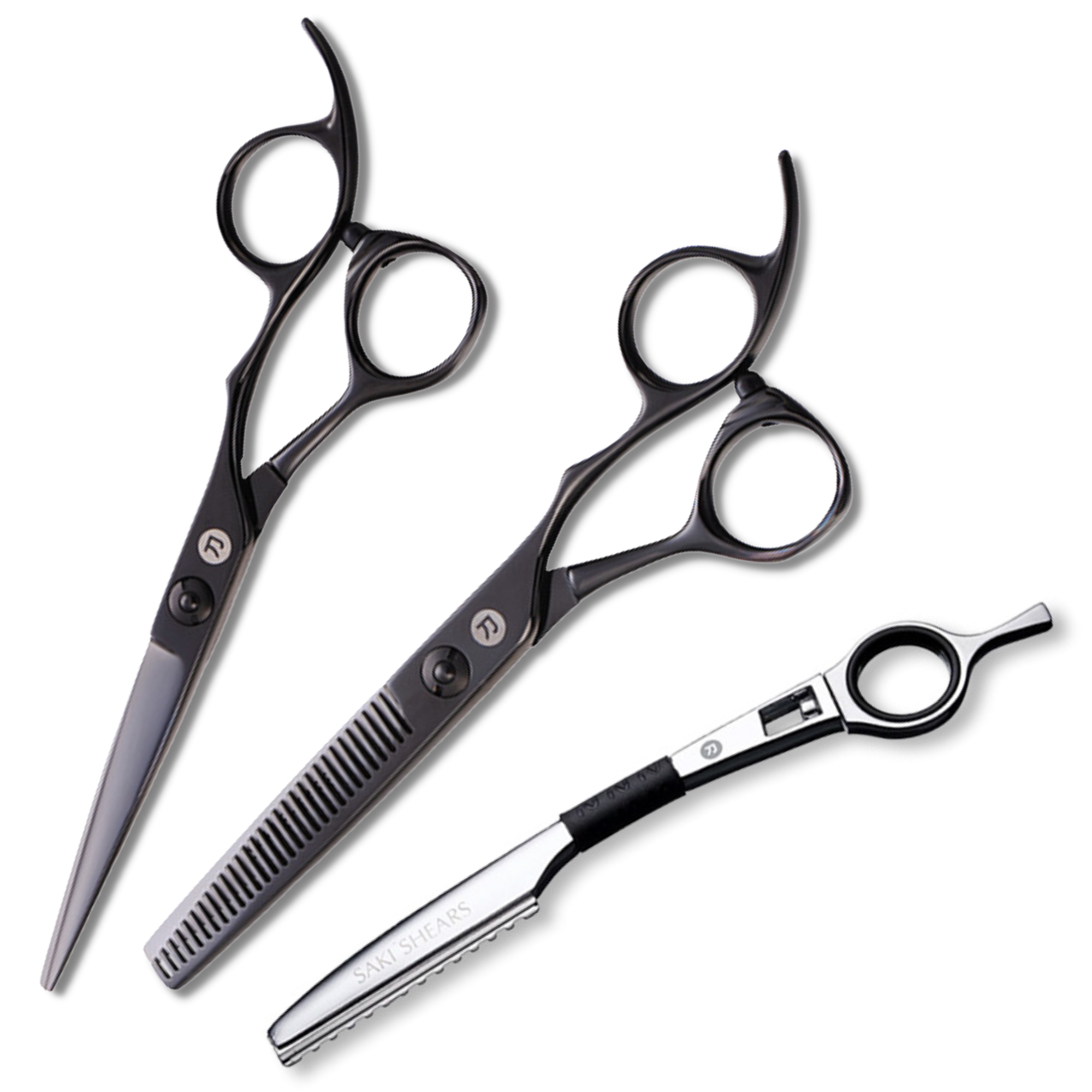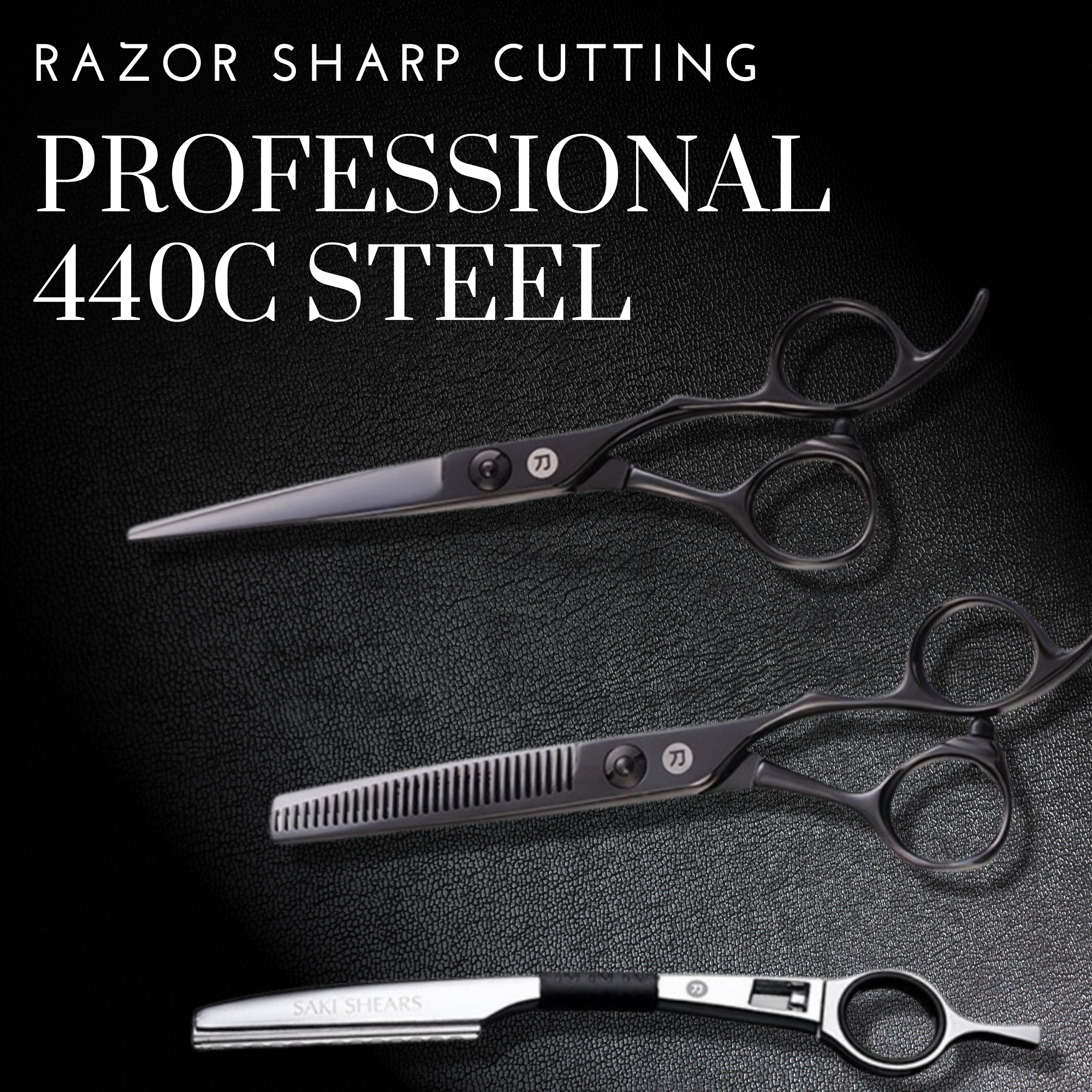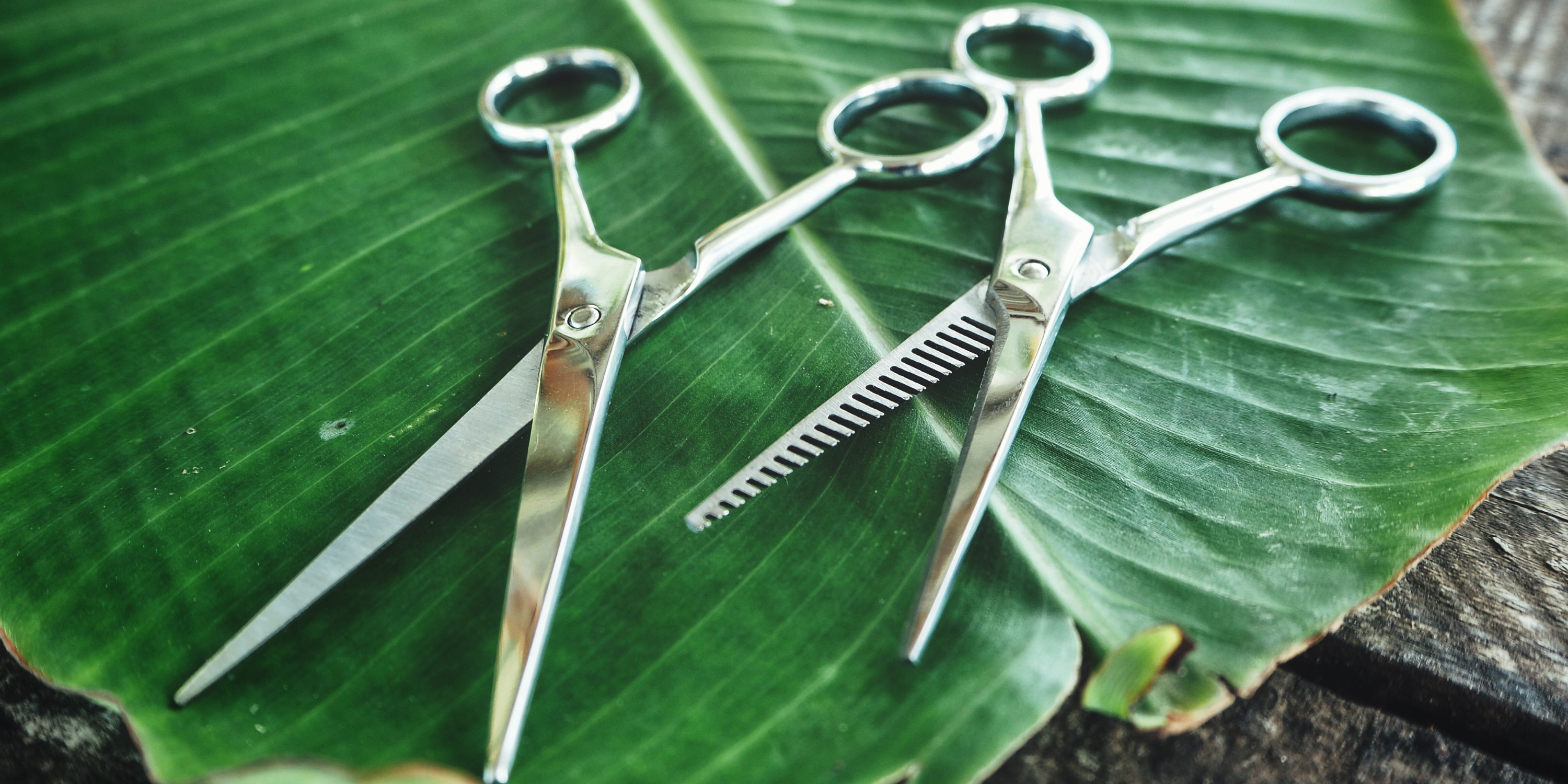Unlocking Precision and Control: The Impact of Blade Angles on Hair Cutting
In the world of hairstyling, the tools wielded by professionals hold the power to transform hair into works of art. Among these tools, hair shears take center stage as essential instruments in the hands of every skilled stylist or barber. However, there is a hidden aspect of hair shears that often goes unnoticed—the blade angle. Understanding the science behind blade angles and their profound impact on hair cutting can unlock a whole new level of precision and finesse. In this article, we will delve into the fascinating world of hair shear blade angles, exploring their influence on the cutting process and unveiling the secrets to achieving exceptional hairstyling results.
With a deep understanding of the science behind blade angles, stylists can harness their potential to revolutionize their cutting techniques. By discovering the optimal blade angle for each cutting style, texture, and hair type, professionals can elevate their skills and offer their clients unparalleled artistry and satisfaction.
Understanding Blade Angles
To comprehend the impact of blade angles on hair cutting, let's start by understanding what they are. Blade angles refer to the slope of the cutting edge of the shear's blades. The angle determines how the blades come together during a cut and significantly affects the performance and outcome.
In the world of hair shears, three main blade angles are commonly encountered: convex, beveled, and semi-convex. Each has its own characteristics and influences the cutting process differently.
-
Convex Blade Angles: The cutting edge of convex blade hair shears has a gentle curve, resulting in a sharper and smoother cut. These shears require less force to cut through hair, offering enhanced precision and control. Convex blade shears are often favored by professionals for their exceptional performance and versatility.
-
Beveled Blade Angles: Beveled blade shears have a straight cutting edge with a visible angle. They require more force to cut through hair compared to convex blade shears. Beveled blades are often found in entry-level or general-purpose shears, providing an affordable option for beginners.
-
Semi-Convex Blade Angles: Semi-convex blades offer a combination of convex and beveled features, providing a middle ground between the two. They offer a compromise between sharpness and durability, making them suitable for a wide range of cutting techniques.
The Impact of Blade Angles on Hair Cutting
Blade angles have a significant impact on the hair cutting process, influencing various aspects of the technique and the final result. Let's explore some of the key effects of blade angles:
-
Cutting Force: Blade angles determine the force required to cut through different hair types. Convex blade shears, with their sharper edges, reduce the resistance encountered during cutting, resulting in smoother and effortless movements. This can be particularly beneficial when working with thick or coarse hair, minimizing hand fatigue.
-
Hair Texture and Thickness: Blade angles affect the way shears interact with different hair textures. For fine or delicate hair, a steeper blade angle can prevent excessive thinning or damage. On the other hand, a shallower blade angle may be preferred for thicker or curly hair to enhance control and precision.
-
Precision and Control: The blade angle significantly influences the level of precision and control a stylist can achieve. Convex blades excel in creating clean lines, making them ideal for precise techniques like blunt cuts or creating defined layers. The smooth motion and sharpness of convex blades allow for seamless cutting and shaping.
-
Speed and Efficiency: The angle of the blades also impacts cutting speed. Convex blade shears require less force and tend to glide through the hair effortlessly, allowing for faster cutting. This can be particularly advantageous in a busy salon environment where time is of the essence.
Optimal Blade Angles for Different Cutting Techniques
Different cutting techniques may benefit from specific blade angles to achieve the desired results. Here are a few examples:
-
Blunt Cuts: Blunt cuts require a precise, even line. Convex blade shears with their sharp edges and smooth cutting motion excel in creating clean, blunt lines that blend seamlessly.
-
Layers and Texturizing: For creating layers and adding texture, a shallower blade angle can be beneficial. It allows for more controlled and gradual thinning of the hair, resulting in soft and natural-looking layers.
-
Point Cutting and Slide Cutting: Point cutting and slide cutting techniques often require precise control and the ability to remove bulk without creating harsh lines. Convex blade shears, with their exceptional precision, are well-suited for these techniques.
It's important to note that personal preferences and individual cutting styles also play a role in determining the optimal blade angle for a stylist. Experimenting with different blade angles can help stylists discover their preferred cutting shears and techniques.
Innovations in Blade Angle Technology
Over the years, advancements in blade angle technology have introduced new possibilities in the world of hair shears. One notable innovation is the introduction of adjustable blade angles or interchangeable blades. These designs allow stylists to customize the blade angle based on their specific needs or the desired cutting technique. This versatility enhances the stylist's ability to adapt to different hair types and achieve optimal results.
Furthermore, emerging trends and experimental designs are pushing the boundaries of traditional blade angles. Some manufacturers are exploring asymmetrical blade angles or unique geometries to improve cutting efficiency and introduce new cutting techniques. While these experimental designs may still be in their early stages, they offer a glimpse into the future possibilities of hair shears.
Choosing the Right Blade Angle for Hair Shears
Selecting the right blade angle for your hair shears involves considering multiple factors. First and foremost, understand your cutting style and the specific techniques you frequently use. Assess the hair types you work with most often and determine the level of precision and control you require.
It's also essential to try out different blade angles and experiment with them. Attend industry events or visit suppliers who offer opportunities for hairstylists to handle different shears. By experiencing the feel and performance of various blade angles firsthand, you can make an informed decision that aligns with your cutting preferences.
Maintaining Blade Angles for Optimal Performance
To ensure your hair shears consistently deliver optimal performance, proper maintenance is essential. Regular sharpening and honing are crucial to preserve the desired blade angle. Dull blades can compromise cutting efficiency and require more force, leading to potential strain or damage to both the shears and the hair.
Consider professional sharpening services or invest in high-quality sharpening tools if you prefer to maintain your shears yourself. Follow recommended guidelines and consult experts to maintain the desired blade angle and extend the lifespan of your shears.
The realm of hairstyling is a delicate dance of artistry, skill, and science. Understanding the science behind hair shear blade angles is the key to unlocking a whole new level of expertise. Armed with this knowledge, stylists and barbers can transcend the boundaries of conventional cutting techniques and embark on a journey of innovation and creativity.
As you embark on your hairstyling endeavors, don't overlook the significance of blade angles in hair shears. Embrace the power they hold to enhance precision, control, and efficiency. Experiment with different blade angles, discover your preferences, and adapt them to various cutting techniques and hair types. Continuous improvement is the path to mastery, and by harnessing the science behind blade angles, you can take your hairstyling skills to new heights, delighting clients and leaving a lasting impression in the world of hair fashion.
Saki Cisailles Vente









L'ensemble de coupe de cheveux Saki Katana est la paire parfaite! Faits à la main et fabriqués à l'aide d'acier inoxydable japonais et d'un épais revêtement de titane noir, les ciseaux à cheveux Katana Saki et le cisaillement à éclaircir offrent la durabilité ultime pour une paire de ciseaux à cheveux longue durée sur laquelle vous pouvez compter. L'ensemble Saki Katana comprend nos cisailles de coupe de cheveux premium, cisailles à cheveux, rasoir et étui de transport en cuir.
Options:
L'ensemble de 6 "comprend la cisaille Katana 6", la cisaille à éclaircir 6 ", le rasoir pivotant et l'étui en cuir.
L'ensemble de 7 "comprend les cisailles Katana 7", les cisailles à éclaircir 6 ", le rasoir pivotant et un étui en cuir.
Gaki Katana Garantie: Couvert par Saki Shears Garantie à vie
Saki Katana Ciseaux de coupe
Les cisailles à cheveux Saki Katana présentent un bord convexe et une lame en acier inoxydable à triple rodage pour une coupe précise et lisse, tandis que la poignée de grue extra-longue et décalée combat la fatigue et offre le confort ultime. Idéal pour la coupe émoussée, humide et sèche.Caractéristiques:
- Fait à la main pour la précision
- Matériau: Acier inoxydable japonais
- Lame: Lame convexe de style japonais avec la dureté 60-61 HRC
- Taille de bague : Réglable
- Soudé en deux pièces
- Revêtement noir: Revêtement titane
- Épaisseur de revêtement: 1.5 um
- Taille: 6 pouces
Cisailles éclaircies Saki Katana
Saki Katana Thinning Shear est parfait pour éclaircir, mélanger et/ou ajouter de la texture à toute coiffure avec 30 dents et épaisses, courtes lames épée arrière. Offset, poignée de grue extra-longue et taille de bague réglable offre le plus grand confort et soutien tout en style.
Caractéristiques:
- Fait à la main pour la précision
- Matériau: Acier inoxydable japonais
- Lame: Lame convexe de style japonais avec la dureté 60-61 HRC
- Taille de bague : Réglable
- Soudé en deux pièces
- Revêtement noir: Revêtement titane
- Épaisseur de revêtement: 1.5 um
- Taille: 6 pouces/30 dents
Votre Saki Katana Set comprend:
- 1 cisailles à cheveux saki katana faites à la main
- 1 Ciseaux à éclaircissement Saki Katana faits à la main
- 1 rasoir pivotant fait main
- 1 cas
- Garantie à vie
Saki Cisailles Katana ligne de ciseaux à cheveux sont p Pour les maîtres barbiers, les coiffeurs avancés et les coiffeurs professionnels.





